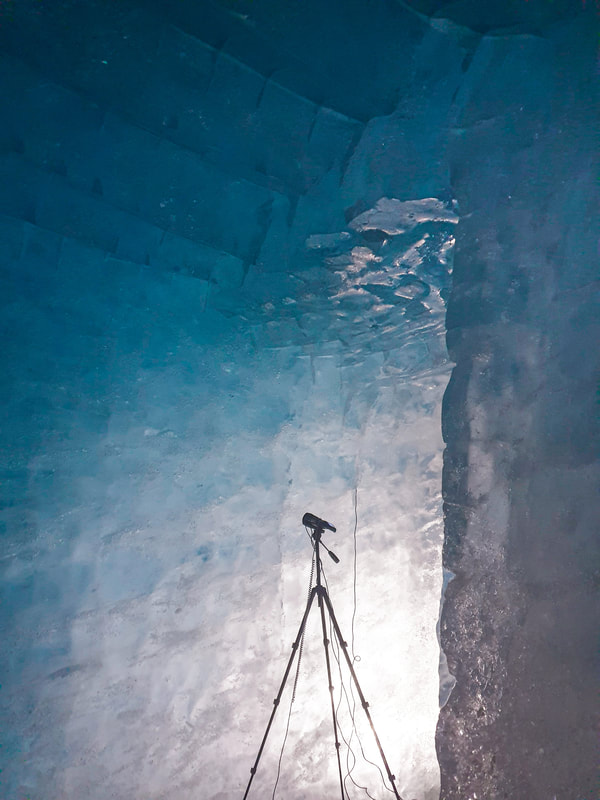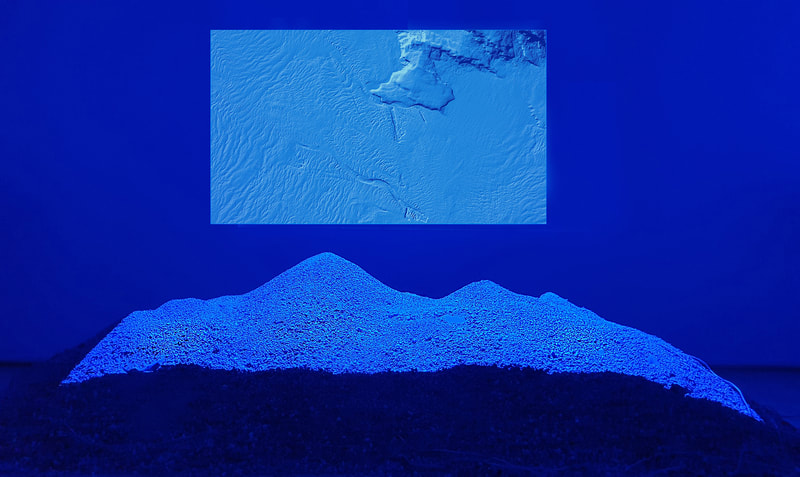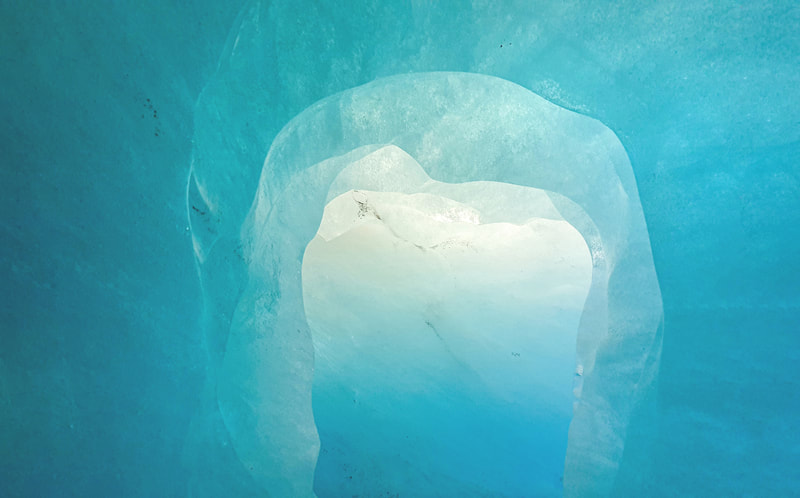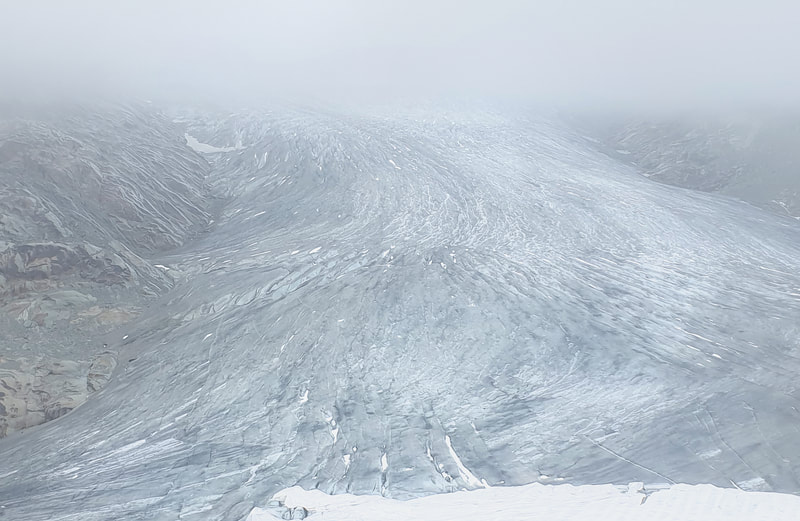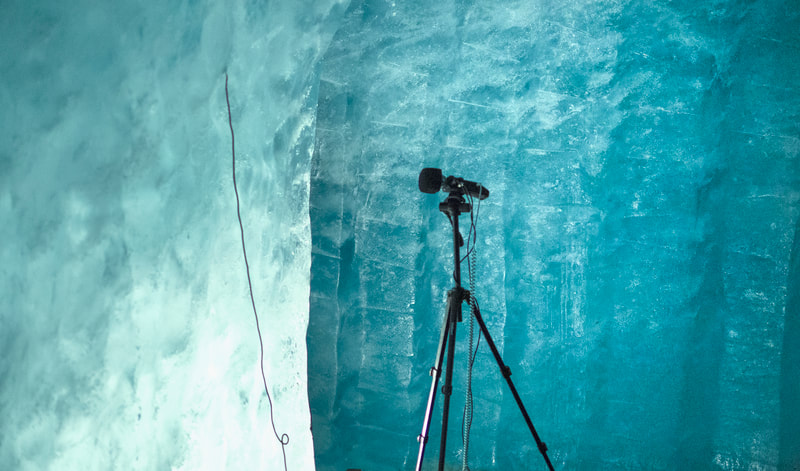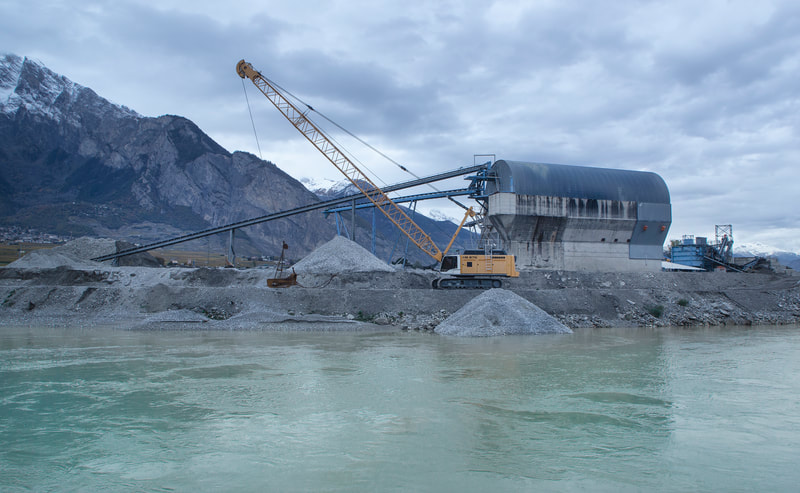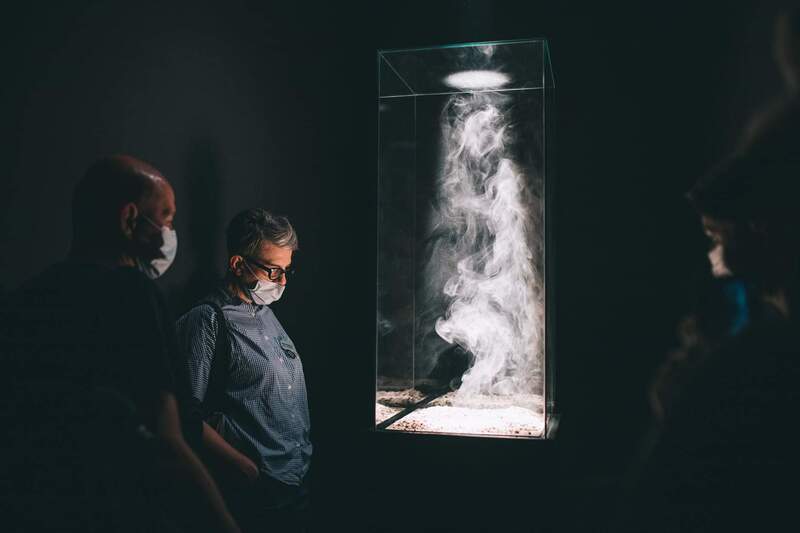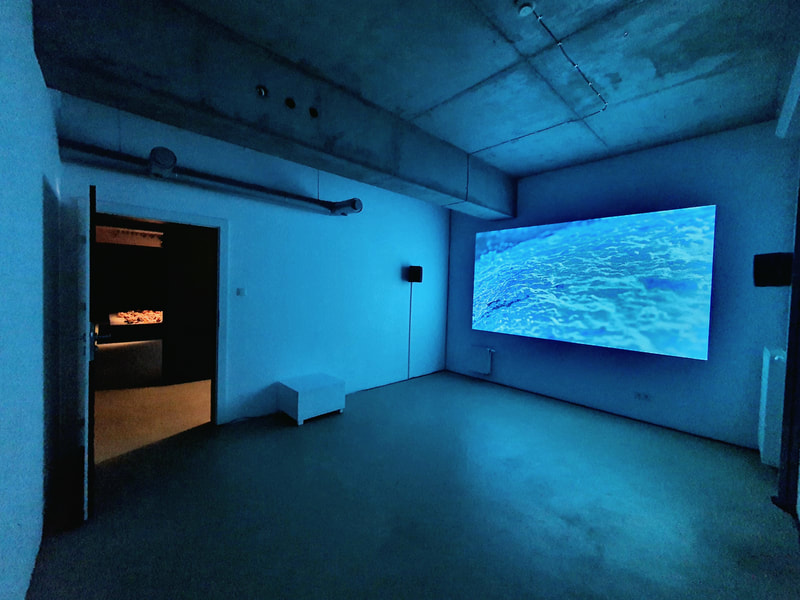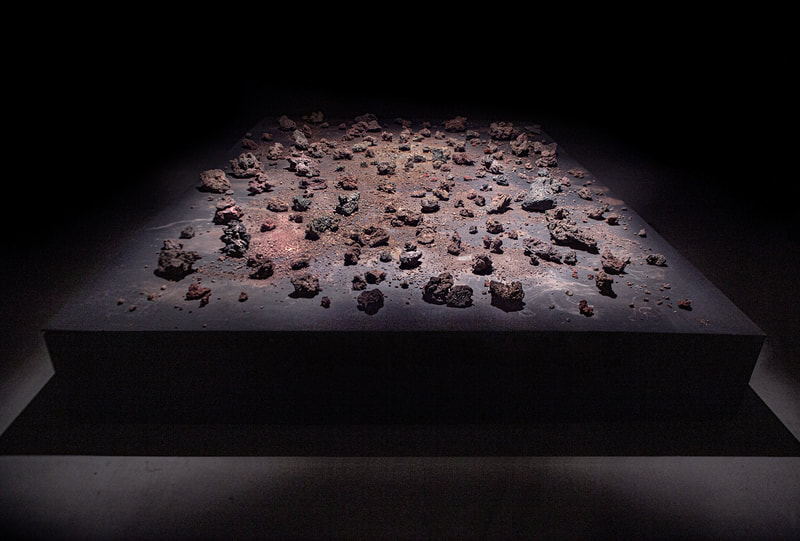Rhone # 1 - Suspension
Rhone #2 - Field
Rhone #3 - Glacial Dill
Rhone - On site location
Rhone
Multichannel Audiovisual installation - Glacial gravel. 7 prepared infrasound transducers, 5.2 sound system. HD video projection.
In simple words, RHONE is a site specific research project, result of a 3 month recording expedition to the Rhone Glacier, the birthplace of one of Europe's biggest rivers. This giant bodie of Ice was the biggest Glacier of the Alps in the last Ice Age, and the main responsible for the geologic formation of the Swiss Lac Leman and the valley that precedes it.
By using high sensibility hydrophones, and microphones, several recordings were conducted on different locations of the Glacier, these include: Ice tunnels, the mountain range and a Gravel Factory that operates on the Glacier´s end.
The recordings were made with special attention to low frequencies and infra-sound. Infrasound corresponds to a range of frequency below human hearing capacity, these can be produced both in the movement of the Glacier and in big mechanic industrial complexes.
Several Artworks were created using these infrasound frequencies as Sculptural tools that cannot be heard, but interact and physically affect the materials around us.
These Sound Sculptures use gravel collected directly at the bottom end of the Glacier, and self designed sound systems created to reproduce extreme low frequency acoustic pressure.
Although infrasounds cannot be acoustically perceived by humans, the transducer speakers generate movement, constantly oscillating the gravel around them. They physically interact with the Glacier gravel, re-arranging the soil in a kinetic installation, and generating new acoustic sounds on their own.
This project was shown under a recent Solo Show, part of the WRO Biennal of Media Art, in Poland. And awarded by the European EMAP production grant.
Research fund: La Becque Artists in Residence, Switzerland
Production fund : EMAP
Currently open at Sibersalz Festival.
Rhone
Multichannel Audiovisual installation - Glacial gravel. 7 prepared infrasound transducers, 5.2 sound system. HD video projection.
In simple words, RHONE is a site specific research project, result of a 3 month recording expedition to the Rhone Glacier, the birthplace of one of Europe's biggest rivers. This giant bodie of Ice was the biggest Glacier of the Alps in the last Ice Age, and the main responsible for the geologic formation of the Swiss Lac Leman and the valley that precedes it.
By using high sensibility hydrophones, and microphones, several recordings were conducted on different locations of the Glacier, these include: Ice tunnels, the mountain range and a Gravel Factory that operates on the Glacier´s end.
The recordings were made with special attention to low frequencies and infra-sound. Infrasound corresponds to a range of frequency below human hearing capacity, these can be produced both in the movement of the Glacier and in big mechanic industrial complexes.
Several Artworks were created using these infrasound frequencies as Sculptural tools that cannot be heard, but interact and physically affect the materials around us.
These Sound Sculptures use gravel collected directly at the bottom end of the Glacier, and self designed sound systems created to reproduce extreme low frequency acoustic pressure.
Although infrasounds cannot be acoustically perceived by humans, the transducer speakers generate movement, constantly oscillating the gravel around them. They physically interact with the Glacier gravel, re-arranging the soil in a kinetic installation, and generating new acoustic sounds on their own.
This project was shown under a recent Solo Show, part of the WRO Biennal of Media Art, in Poland. And awarded by the European EMAP production grant.
Research fund: La Becque Artists in Residence, Switzerland
Production fund : EMAP
Currently open at Sibersalz Festival.
